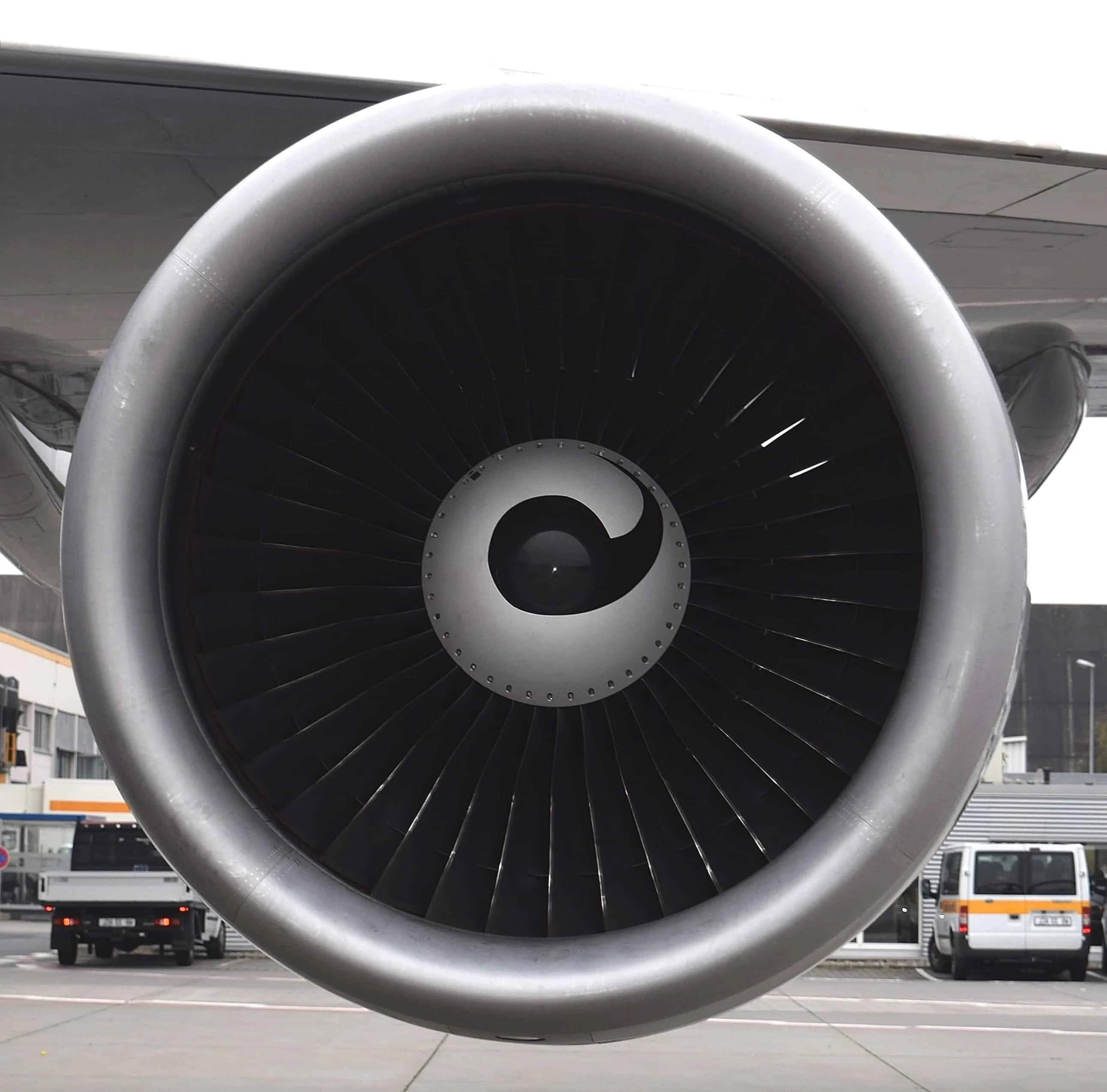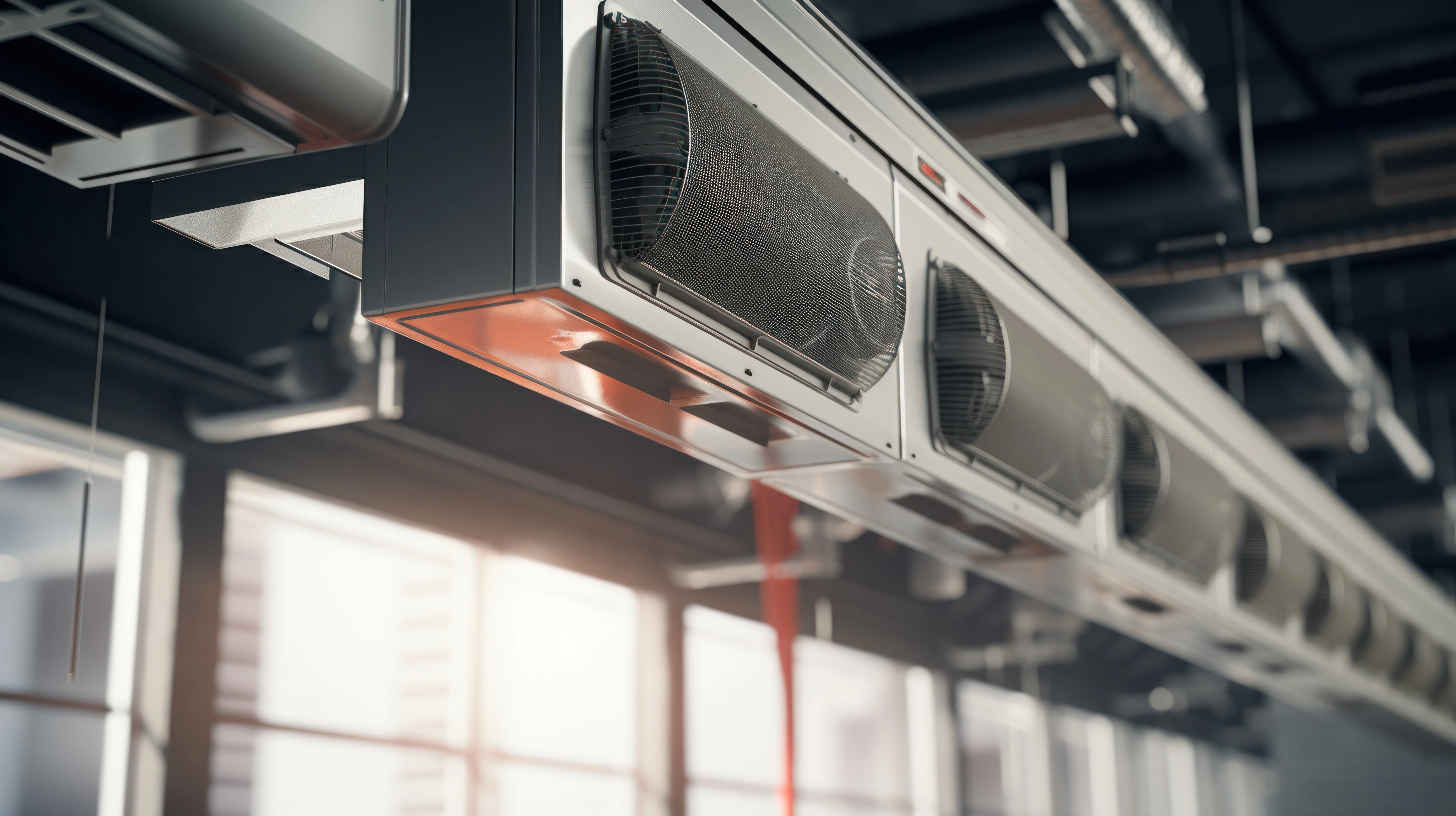GREEN TECH
Why Use Permanent Magnets?
- Efficiency: PMs create a magnetic field without needing continuous electrical energy, leading to more efficient motors.
- Reliability: PMs don't require external power for their magnetic field, increasing reliability.
- Compact Size and Weight: PM motors can be smaller and lighter than comparable motors with electromagnets, which is important in aircraft design.
Green Transportation
Green Power
Green Energy
green trANSPORTATION
AUTOMOBILES
While existing gasoline based automobiles use PMs for the drivetrain and other functionalities, the use of PMs is almost tripled by weight in electric vehicles. The growth trend for electric vehicles (whether for autos, trucks or buses) is predicted to be the biggest change in the auto industry since the invention of the automobile.
As reported in the New York Times on February 8, 2022, the auto industry is on track to invest half a trillion dollars in the next five years to make the transition to electric vehicles. Fortune Business Insights reports that sales of electric vehicles will hit $137 billion by 2028. Worldwide sales will see even greater growth since most foreign countries are not blessed with the oil resources which America has.
PMs used In Conventional Automobiles
- Electric Power Steering (EPS)
- Sensors and Actuators: Magnets are used in various sensors and actuators throughout vehicles. Magnetic sensors assist in precise monitoring and control of critical systems, such as speed sensors for anti-lock braking systems (ABS), position sensors for throttle control, and crankshaft position sensors for engine management.
- Audio Systems: Speakers utilize magnets to convert electrical signals into sound waves.
- Other Applications: Magnets are also found in windshield wipers, power windows, door locks, and fuel injectors.
PMs used in Electric Vehicles (EVs)
- Electric Motors: Permanent magnets are integral components in EV motors, particularly those using permanent magnet synchronous motors (PMSMs). These magnets generate a powerful magnetic field, facilitating the conversion of electrical energy into mechanical motion, propelling EVs with unprecedented speed and sustainability.
- Regenerative Braking: Magnets in the motor also enable regenerative braking, where the motor acts as a generator during braking, converting kinetic energy back into electrical energy to recharge the battery.
- Wireless Charging Systems: Magnets play a role in wireless charging systems for EVs now under development.
Specific advantages of using permanent magnets in EV motors
- High efficiency: Permanent magnet motors offer greater energy efficiency compared to induction motors, contributing to longer driving ranges and reduced energy consumption.
- High power density: They provide a high power output relative to their size and weight, making them ideal for compact EV applications.
- Excellent torque characteristics: Permanent magnet motors deliver strong torque at low speeds, ensuring quick acceleration and responsive driving experiences.
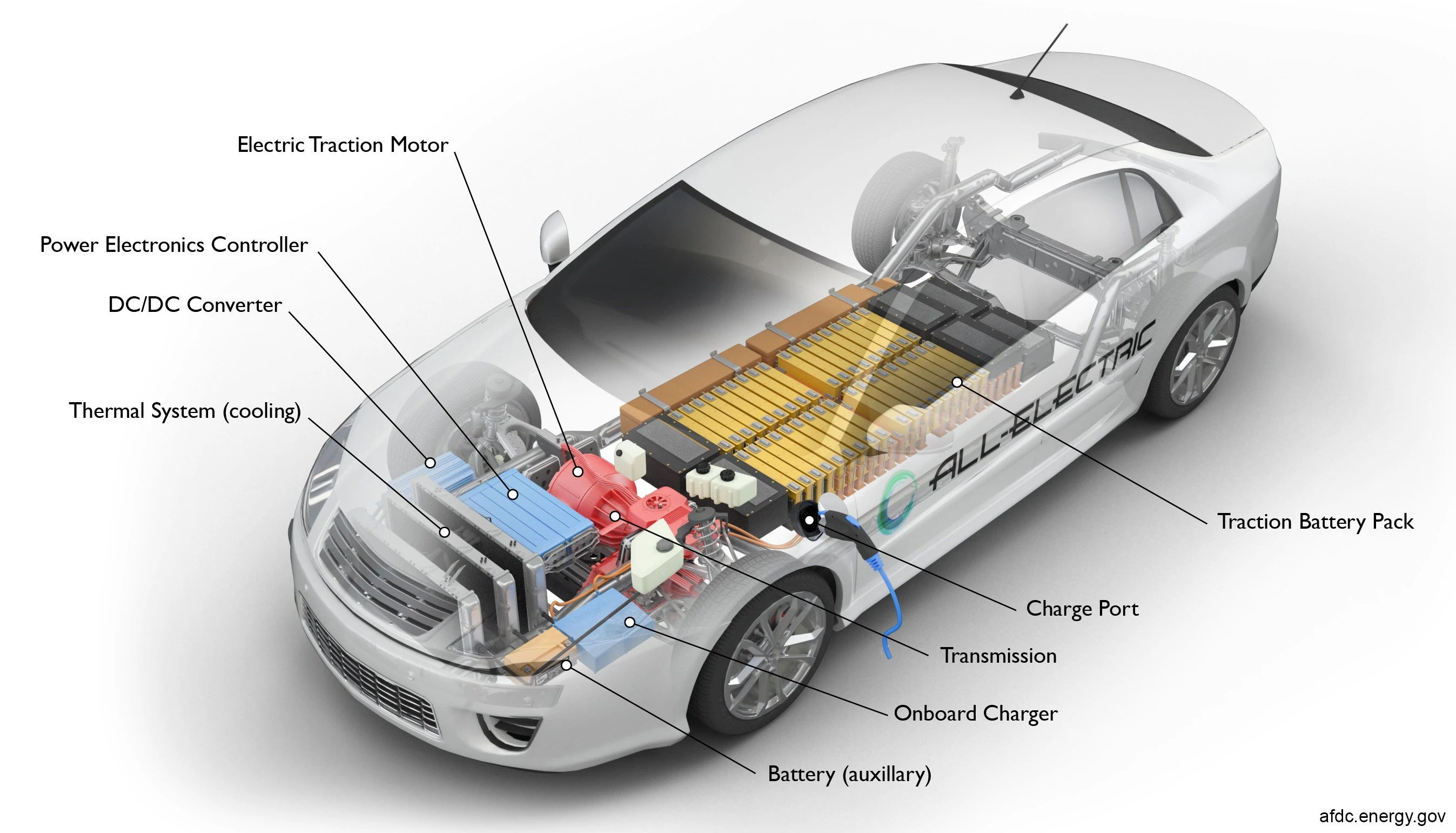
Electric Car
Several pairs of permanent magnets are located on the rotor in this synchronous motor.
Aircraft
PMs are used in the manufacture of aircraft but their use is carefully regulated due to potential interference with aircraft instruments.
- Electric Actuation Systems: Permanent magnets, particularly strong neodymium magnets, are crucial components in the motors used for various aircraft functions.
- Flight control systems: Ailerons, elevators, and rudders can be controlled by actuators powered by permanent magnet motors.
- Environmental control systems: Cabin temperature and pressure regulation often rely on permanent magnet motors for fans and compressors.
- Braking systems: Some aircraft braking systems utilize permanent magnets in their motors.
- Fuel systems: Fuel pumps can be driven by permanent magnet motors.
- Oxygen production systems: Advanced oxygen concentrators for aircraft use permanent magnet motors.
green Power
WIND TURBINES
Permanent magnets play a crucial role in modern wind turbines, particularly in direct-drive generators. These generators use permanent magnets to create a magnetic field that interacts with the rotating blades to generate electricity. The use of permanent magnets offers several advantages
- Increased efficiency: Permanent magnet generators are more efficient than traditional geared generators, as they eliminate the need for a gearbox, which reduces mechanical losses.
- Reduced maintenance: Gearboxes are prone to wear and tear, requiring regular maintenance. Direct-drive generators with permanent magnets have fewer moving parts, resulting in lower maintenance requirements.
- Lighter weight: Permanent magnet generators are lighter than geared generators, reducing the overall weight of the wind turbine and making installation easier.

The global wind energy market has experienced significant growth over the past decade, driven by the increasing demand for clean energy and the declining cost of wind turbine technology. According to the Global Wind Energy Council (GWEC), the total installed capacity of wind power worldwide reached 906 GW in 2022, with China, the United States, and Germany leading the way. Factors contributing to the growth of wind turbines include:
- Technological advancements: Advancements in wind turbine technology have led to larger, more efficient turbines that can generate more electricity at a lower cost.
- Government support: Many governments around the world have implemented policies to support the development of wind energy, such as feed-in tariffs, tax credits, and renewable portfolio standards.
- Environmental concerns: Growing concerns about climate change and air pollution have increased the demand for clean energy sources like wind power.
Transformers
NCM's permanent magnet in its current 10 -20 nanomters sized powder form (even before they are densified into solid shapes and forms for other applications) can be utilized to transform the transformer industry. Transformers are used to change voltage levels to meet the needs of different applications that include transmission, distribution, power tools and rectifier circuits. Currently, this is a worldwide $60 Billion market. NCM technology and products can create compact, high frequency and lightweight transformers for electrification, EV charging stations and other applications.
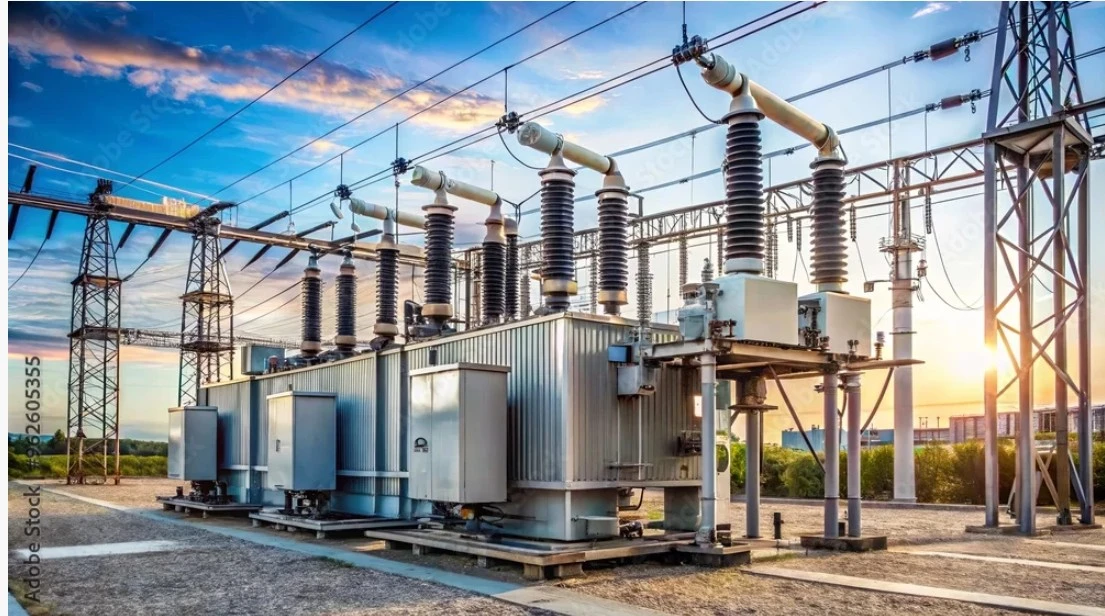
Transformers currently in use suffer from the following problems:
Since magnetic flux exists in the Fe-core all directions, these transformers suffer from significant core (flux) losses.
At high frequency operation (fast response time) their performance is less efficient. For an efficiently coupled transformer, we have designed a core that aligns all the flux-lines in one direction with high Magnetic anisotropy (nanowires). This is expected to minimize flux losses as well as enable operation at higher frequencies. Several new core-structures are proposed that will also enable high-frequency operation which is needed for charging stations of EVs and for transmission. Different Composite Structures of our nanopowder and iron core are being designed.
MASSIVE SAVINGS IN ENERGY USE MEANS MORE GREEN ENEGRY
Refrigeration and air conditioning
PMs play a crucial role in a new and innovarive cooling technology. This technology uses the magnetocalorific effect to create environmentally friendly and energy efficient cooling systems. The cost and limited supply of strong PMs have inhibited innovation in this field. Surging energy demand from data centers due to growth of AI makes more efficient cooling a top priority.
Magnetocaloric cooling and refrigeration can reduce energy usage by 25%. The global market for air conditioning and refrigeration is enormous and growing rapidly. This is especially so in view of global warming and rising affluence. It was valued at approximately USD 305.7 billion in 2022 and is expected to reach USD 431.5 billion by 2030, growing at a CAGR of 4.5%.
Specific applications of permanent magnets in this market include variable frequency air conditioners. High-performance neodymium magnets are now used in these energy-efficient systems.
Magnetic refrigeration: This emerging technology uses the magnetocaloric effect to provide cooling without harmful refrigerants. It is in its early stages of development but has the potential to revolutionize the industry. In addition to energy savings, permanent magnets also offer benefits like:
- Reduced size and weight: Making systems more compact.
- Improved reliability and durability: Less prone to breakdowns.
- Lower noise levels: Quieter operation
